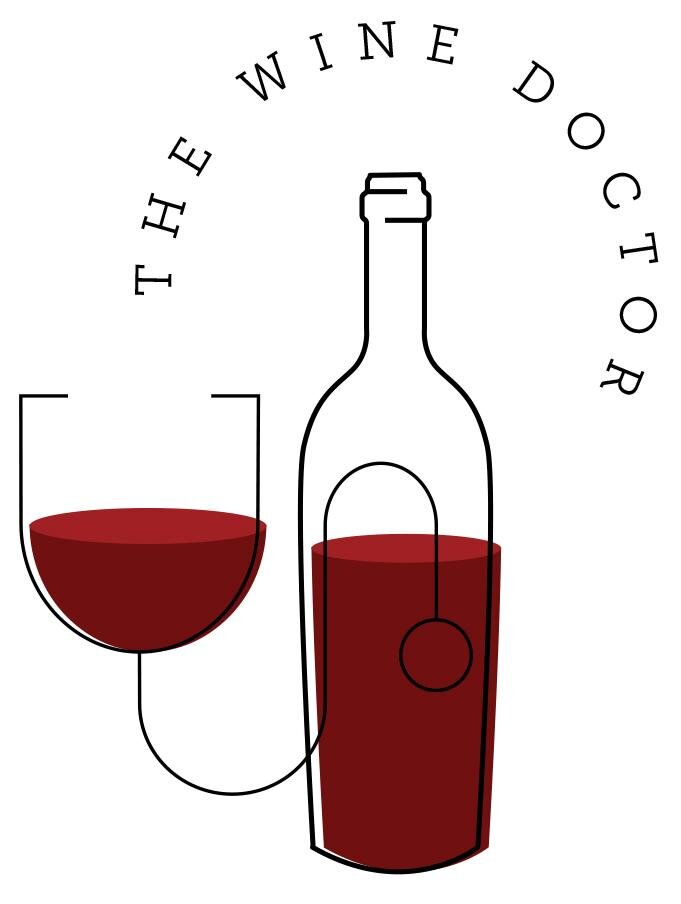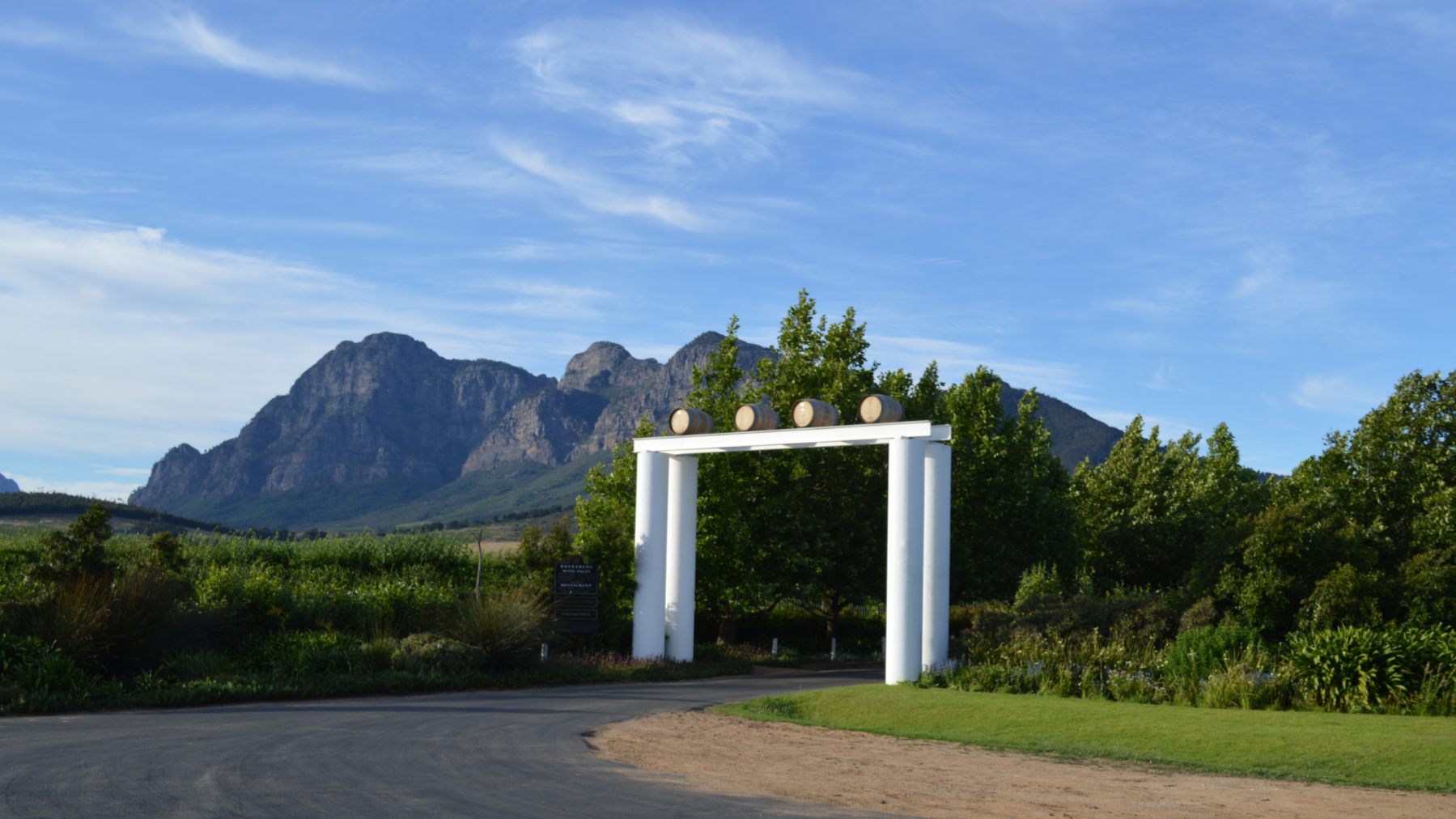It's lekker, bru!
Huh?? What is he talking about? Has the Doctor pulled one too many corks? Well, maybe…
Seriously, the post title is a clue to where we are going today. These are a couple of slang terms you will find if you visit South Africa!
Lekker is from the South African dialect Afrikaans, which derived from the original Dutch settlers in the 17th century. It means “great”, “fantastic”, “cool”, etc. You can probably guess that bru is a variation on “bro”, but in this case is kind of gender neutral.
So…back to the southern hemisphere. In the last post, G’day, we learned that Australia is the 7th largest wine producing region in the world. Right behind is South Africa, but all that production is concentrated in a much smaller area:
The wine regions of South Africa, particularly where we are going, enjoy relatively stable warm summers and cool, wet winters. This climate is well-suited to growing a variety of grapes.
So just where are we going? For this trip, I decided to profile two wines, one red and one white, from the same producer. We will be going to that off-yellow area on the map east of Cape Town known as Paarl. Paarl, along with its neighbor Stellenbosch, is home to some of South Africa’s best wines.
Paarl area vineyards
By the way, check out the picture in the thumbnail for this post on my site’s Blog Page. That amazing obelisk is the Afrikaans Language Monument in Paarl.
Let’s learn a little about our producer first. Once again we have another great winemaking family story: Backsberg. Backsberg was founded in 1916 by a refugee from Lithuania, Charles Louis Back. Working around the docks in Cape Town, he ultimately made enough money to buy a butcher shop in Paarl, which he wisely sold when learning of a farm for sale. This farm, which is the term for the business the family uses to this day, produced a lot more than grapes.
In the late 1960s, second generation Sydney sold the name, which then was “Back’s Wines”, and the business ultimately slimmed down and re-focused on making quality wine only, under the new name Backsberg. Third generation Michael Back handed over the CEO title to his son Simon in 2008.
Today, Backsberg’s vineyards total some 275 acres between Paarl and Stellenbosch. The emphasis is on, as the Backs say, “producing wines not only with structure and finesse, but also with a high level of drinkability”. The family is very committed to sustainable, environmentally friendly practices, most notable with their “Tread Lightly” label. They also make sweet & fortified wines, as well as brandy. Here is a shot of the entrance to Backsberg (that’s the Simonsberg range in the background):
Our first wine is a white: Chenin Blanc. If you are not familiar with Chenin Blanc, you should be. But no worries, that’s part of the reason we are here! It is found primarily in France and in South Africa, where it is often referred to by its other name, “Steen”. In France, you will find Chenin Blanc primarily in the middle of the Loire Valley. The region of Vouvray, just outside of Tours, is particularly notable for CB.
Chenin Blanc is made in a wide variety of styles, including sparkling wine and even dessert wine. Our version of Chenin Blanc will be in the more traditional lean, dry style. These wines typically have tree fruit characteristics, with higher acidity. If you like Sauvignon Blanc, this will be a nice alternative for you to discover. So let’s dive in!
This is Backsberg’s latest Chenin from their “Premium Range”, the 2019 vintage. Don’t worry about that word Premium - I found this bottle at my local Heinens for approximately $14.
2019 Backsberg Chenin Blanc
Regular readers know this is where we normally do a little digging and learning about what the label is telling us. Not much to figure out here! Tells us very simply and cleanly what is inside and where it came from.
One thing I should add that you can’t see in this picture: the wine is bottled with a screw cap, same as we discovered in Australia. Again, no quality implications.
Time to taste!
Tasting:
In the glass the Chenin is a pale yellow color. On the nose, you are struck first by a honeysuckle note, quickly followed by tree fruits (pear) but also citrus. A second and third sniff picks up maybe a little spice note. On the palate, we get reinforcement of what was on the nose: white peach, pear and lime. Acidity is Medium+, as you’d expect and want. However, I definitely get more of that “mouthfeel”, which adds to the sense of complexity. Contrast that with a NZ Sauvignon Blanc for example, where the acidity and finish are more zippy or racy.
The Bottom Line:
This wine is nicely in balance. It is refreshing and has enough going on to keep you coming back. LOTS of food pairing choices with this wine. In addition to the classic shellfish match, you should think about Chenin Blanc for salads, particularly those with apples or pears. Also good with avocado or goat cheese. Lots of spring vegetables work too. Finally, this should be one of your go-tos if you are having Asian food. With warmer weather coming, this is the perfect time to explore Chenin Blanc.
Our next wine is a red: Pinotage. Pinot who? “Pee-no-taj” is the easiest and closest way for us non-locals to pronounce it. Say it this way and your wine merchant will know what you mean. A South African wine maker’s pronunciation may be closer to “pin-nuh-targe”. This varietal is a distinctly South African creation, bred in the 1920s by crossing Pinot Noir with the French varietal Cinsault (“sin-so”), a blending grape from the Rhone. In those days, Cinsault was known in SA as “Hermitage”, thus the name.
Surprisingly, Pinotage is a bigger wine than either of its parent varietals. It can be a little like Shiraz from Australia. Like its parent Cinsault, it can be very “productive”, meaning Pinotage can thrive in a variety of climates and soils. Pinotage’s skins are high in tannins, and sometimes contain certain unwelcome acids, but good winemakers have figured out how to tame it. The result can be a dense wine that is full of dark fruits, sauce and maybe sweet smoke.
Let’s see how Backsberg has interpreted this unique grape. I got this bottle at Heinens for $19.
Backsberg 2018 Pinotage
Once again, nothing to really decipher on the front label. On the back label, we learn that it is not 100% Pinotage: there is 10% coming from Grenache, Syrah and Zinfandel, in that order. Early in fermentation the grapes went into oak right away for a year before bottling. Oh, you’ll need a corkscrew for this one.
Tasting:
The wine has a medium ruby color, a little lighter than Pinotage can sometimes be. One the nose, you get a big hit of rich, red fruits, and to a lesser degree some herb notes. On the palate, this is a Medium Body wine. I got red, ripe fruits, including strawberry, which was a little surprising. Pinotage can often be associated with black or purple fruits, but I think the little bit of Grenache helps throw in that strawberry note. You also get follow-through on those dried herb flavors. On the mid-palate, this feels juicy, with tannins that are supple, not overpowering. There is moderate acidity, and the wine finishes clean. Alcohol is getting up there but not as high as it could be: a little over 14%.
The Bottom Line:
Juicy is the word. This is a fresher style than I imagined. It is not tannic, not as “big” as Pinotage can be. The ripe, red fruit and dried herb flavors make this a great food wine. When considering what to serve, think about its parents: you could do duck or other game dishes as we noted in That Sideways Wine; you can also key on Cinsault’s Mediterranean influence (think French bistro dishes). Depending on how bold a version of Pinotage you have, you can certainly do stews and barbecue. And don’t forget, flavorful sauces such as teriyaki and plum are a perfect match (thanks Madeline P).
Other Suggestions
Depending on where you purchase your wine, you may have limited South African wine choices. Here are a couple of other names you may want to look for:
Southern Right - Specializing in Pinotage. Also makes Sauvignon Blanc. Great label featuring the rare Southern Right Whale, which is found in the bay not far from their vineyards.
Raats Family - Specializing in Chenin Blanc and Cabernet Franc.
Well, that about does it, but I have to leave where I began, with a little South African-related phraseology. There is a young South African film director & videographer by the name of Dan Mace. He became a friend and collaborator of Casey Neistat, the famous YouTuber. In one of Casey’s vlogs, Dan exhorted Casey to “just smack it!”. Simply put, it means to just do it, with conviction. His “just smack it, bru” caught on and is now part of the Urban Dictionary.
So, in that spirit, let’s keep getting after our wine education, and make sure we have fun in the process!
Until next time…stay safe, and Cheers!





